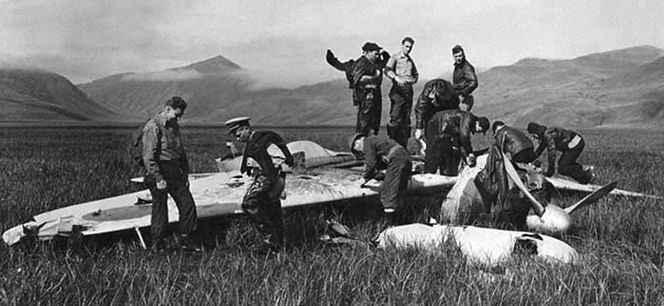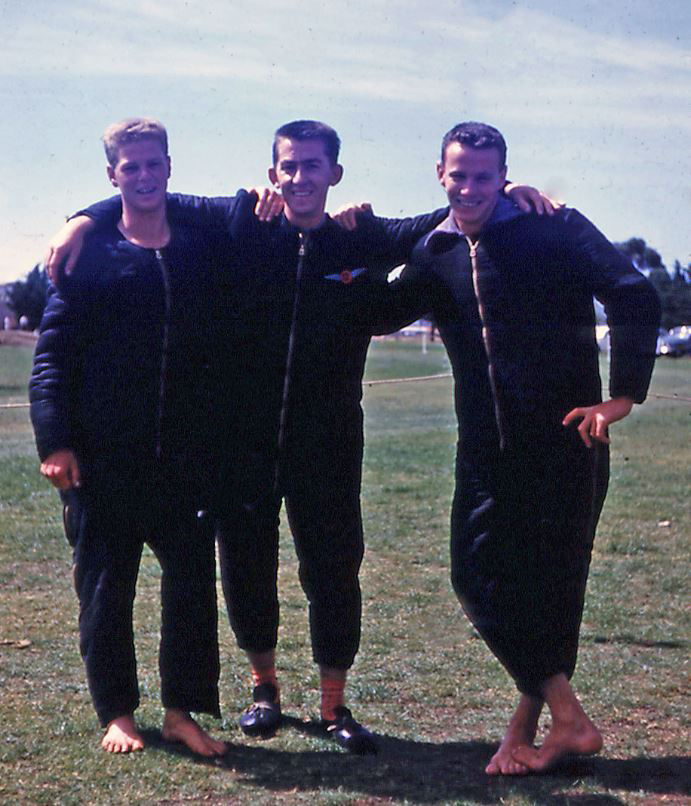|
|
||||
|
Radschool Association Magazine - Vol 43 Page 6 |
||||
|
Privacy Policy | Editorial Policy | Profit Policy | Join the Association | List of Members | Contact us | Index | Links |
||||
|
Out in the shed with Ted
Ted McEvoy.
|
||||
|
Back Go to page: 1 2 3 4 5 6 7 8 9 10 11 12 13 14 15 16 17 18 19 20 Forward |
||||
|
|
||||
|
Gold Commendation award.
|
||||
|
|
||||
|
L-R: Air Marshal, Mark Binskin, Vice Chief Defence Force, Squadron Leader, Vince Chong.
|
||||
|
Squadron Leader Vince Chong received a VCDF (Vice Chief Defence Force) commendation on May 22 in recognition of his efforts as Chairman of the Defence Gay, Lesbian, Bisexual, Transgender and Intersex Information Service (DEFGLIS).
It was SQNLDR Chong's efforts that resulted in a milestone decision allowing ADF personnel to march in uniform at the Gay and Lesbian Mardi Gras parade in Sydney earlier this year. This, in effect, links Defence to the DEFGLIS cause. Who is Sqn Ldr Vince Chong? See HERE.
In my opinion, Defence should be a non-political and non-religious establishment and should not be associated with domestic causes of any nature.
Bernard Gaynor, who is in Military Intelligence with the Army Reserve, feels very strongly about this, you can read his thoughts HERE.
A Twenty four hour day! – Why??
Why do we have twenty four hours in a day as opposed to twenty, or twelve, or any other division of time?
To uncover the mystery of the twenty-four hour day we need to take a trip back to ancient Egypt.
While
many cultures around the world used a base-10 system (largely in part
because they
It was this base-12 system that led the Egyptians to divide the day into 24 hours (two divisions of 12). What’s even more interesting about the Egyptian division of the day is that light and darkness each had their own 12 hours, so in the summer when the daylight hours were extended the 12 hours of the day were longer and the 12 hours of the night were shorter. Individual hours of the day did not have a fixed length until Greek mathematicians proposed such an arrangement in order to facilitate easier calculations. Even then the length of individual hours remained largely fluid until the advent of mechanical clocks nearly fifteen centuries later.
So now you know!!
|
||||
|
A woman without a man is like a fish without a bicycle.
|
||||
|
Time travel.
It turns out that there's a scientific and logical explanation for why people (mostly men) spend so much time in pubs and only get home in the early hours of the morning. The reason for this odd behaviour is based on Einstein's famous Relativity Theory.
It works like this:
It is a well-known fact that the more you drink, the faster you move. After about 10 schooners (or 8 double bundy and cokes), you're moving at close to the speed of light and this is where Einstein enters the picture. According to his Relativity Theory, anybody moving at, or close to the speed of light, undergoes Time Dilation, i.e. time for you in the pub passes slower than for an observer outside the pub.
Complicated calculations have shown that the pub becomes a type of time machine:- for every half-hour spent inside the pub, something like two hours pass outside the pub.
A typical situation is: "OK guys, it's 8 o'clock, I'm gunna surprise the family and get home early!!" However, the moment this person steps outside the pub, the time travel effect is negated by negative radiation from the environment, and he/she then goes:" Why is it so quiet?? OMG!!! It's half past one!! WHAT HAPPENED???!!??" and the answer, of course, is Time Dilation!!
I've tried to explain this to outside observers, but so far nobody (except fellow time travellers) has been able or willing to understand the sound scientific basis of this phenomenon.
|
||||
|
Common sense is like deodorant, those that need it never use it. |
||||
|
Forgotten Vietnam Vets demand due recognition for battles of Coral-Balmoral. Ian McPhedran
|
||||
|
|
||||
|
Retired Major General Peter Phillips, D Company Commander, Vietnam at home in Canberra with ten-year-old grand daughter Sarah. |
||||
|
The battle of Coral-Balmoral was one of the most ferocious yet least known campaigns of the Vietnam War.
In 26 days of torrid fighting during major enemy assaults on their fire support bases, 25 young Australian soldiers from the 1st and 3rd Battalions were killed and almost 100 wounded. More than 270 enemy were killed and dozens wounded and 11 prisoners taken.
May, 2013, marks the 45th anniversary of the battles of Coral-Balmoral with veterans still wondering why the fighting has not been given the historical recognition it deserves. The two bases, north of Bien Hoa, were established to disrupt enemy troops withdrawing from Saigon during the so-called “Mini-Tet" offensive under an operation codenamed Toan Thang. Australian troops supported by Centurion tanks repelled numerous frontal enemy assaults by well-trained North Vietnamese Army regular troops and Vietcong guerrillas. |
||||
|
|
||||
|
Retired Major General Peter Phillips, (centre) then Major Phillips, D Company Commander, in Vietnam in 1968. |
||||
|
The first attack occurred at Coral on May 12 and Balmoral was hit at 2.30am on May 26. Retired Major General Peter Phillips was an infantry Major and the commanding officer of Delta Company 3 RAR at Coral-Balmoral. The former national president of the RSL this week recalled the largest actions fought by diggers over the longest period of time for the entire war. He conceded that Coral-Balmoral had been overshadowed by Long Tan where 18 Australians died in August 1966 when they defeated a vastly larger force and he said he had "no beef at all about that." But General Phillips, who was awarded the Military Cross in August 1968, said he had always wondered why the battles had not been given the recognition they deserved in the official and unofficial histories of the war.
"Balmoral was the high point for 'D' Company," he said. "We had been there for six months and we were at our peak at that time." The Company took the brunt of the initial assaults on Balmoral and while he would have liked his men to have been better dug in, Phillips said his machine gunners and diggers did a marvellous job in keeping the enemy off the wire.
"I am not aware of any breeches and we were very lucky to have the tanks and their devastating fire power," he said.
Australian and Kiwi arterially units also did a great job supporting the troops and providing superior fire power. General Phillips said he was saddened by the age of many of the enemy troops who were mere boys. He said he also found it hard to justify the war despite the fact that it was professionally very satisfying.
"I still regret the loss of seven of my men during the year that we were there. They were all good, down to earth Aussies."
Operation Toan Thang marked a watershed for the Australian Task Force with commanders forced to review tactics following the close calls during several key battles. Intelligence would play a greater role in determining patrol strength and quick reaction forces and rapid indirect fire support were stood up to back-up sub-units in the field. The combined arms team approach still applies today.
Coral-Balmoral also proved once and for all the value of heavy armour as the tanks were credited with winning the day on several occasions. That led to the Army resisting all attempts to this day to remove tanks from the order of battle.
General Phillips, who also served in the Malayan Emergency, served in the Army for another 20 years after his "life changing" experience in Vietnam. He is now retired and lives in Canberra where he enjoys the company of his five grandchildren.
|
||||
|
Bill delivers improved Military Compensation arrangements.
A Bill outlining improved military compensation arrangements passed through Parliament on the 27th June. It is claimed that the Bill will deliver increased support to the veteran and defence communities and their families.
You can read the Press Release from the office of Warren Snowdon HERE and if you’re interested, you can see the 2013 – 2014 DVA Budget HERE.
|
||||
|
DFRDB
Retired Wing Commander Geoffrey Schmidt says the men he once commanded in the RAAF's 75 Squadron had a victory on Tuesday, long after they left the forces.
He says he has thrown himself with a passion into the cause of pension reform with the Defence Force Welfare Association, not for himself or his family, but for the men he served with throughout his career.
''My aim in life was to get the best out of my troops, mostly by trickery bribery, conning, because they were a lot older than me and my biggest aim in life was to have them tolerate me being their boss,'' Mr Schmidt said.
''Those
airmen, lower-ranked people, are the ones who made my career successful,
and they are the ones who are hurting today, because they got a lesser
pension and they are battling to get by because their pensions are
low.''
Mr Schmidt keeps in touch with the members of his unit and says that like many military pensioners, they have seen the value of their retirement benefits eaten away over time by the rising cost of living and what they say is woefully inadequate indexation.
''When they pass away, their widows only get five-eighths of the pension - that's even less still,'' Mr Schmidt said.
Geoff as a brat - aged 15.
''They can go to Centrelink and go through a laborious assessment system and get topped up, but military people find that quite undignified and embarrassing.
''We were told when we joined the Air Force that if we did 20 years or more, we would have a pension that would keep up with the cost of living and we'd be looked after.''
While the details of Tuesday's announcement are far from perfect and there is much work to do, Mr Schmidt believes the major milestone in the struggle is bipartisan agreement to reforms.
''I welcome both major parties having policies to increase the pension because when the government is settled, both parties will have made a pledge and they will co-operate to get us legislation in our favour,'' he said. ''The biggest gain today is co-operation between the two major parties, regardless of who is in and who is out. That's what we've been working on.''
You can read more HERE. |
||||
|
|
||||
|
Show me a man with both feet firmly on the ground, and I'll show you a man who can't get his pants off.
|
||||
|
Everybody has a little bit of Hero in him/her – have a look at THIS.
Atomic bomb explosion "Baker" - Bikini Atoll 1946.
The photo below was taken seconds after the underwater blast of the Bikini atoll A-bomb test "Baker" in July 1946. |
||||
|
This is the blast which destroyed many of the old and expendable ships of the target fleet, which included the ex-German cruiser Prinz Eugen, the surrendered Japanese battleship Nagato, and the USN veteran ships Saratoga, Nevada and Arkansas among many others.
If the photo is examined in large format (click the pic), a long black shape can be seen on the right hand side of the column of water forming the "stalk" of the familiar mushroom cloud.........This is the USS Arkansas, having been lifted by the power of the explosion and water pressure, and the entire 550 foot long 27,000 ton battleship has been stood vertically for a split second before being smashed to the bottom of the lagoon!
|
||||
|
Technology tips.
These little-known technology tips will help you to use any computer like a pro. Even if you think you’re tech-savvy, we bet there’s at least one tip in here you didn’t know.
One When scrolling on the web, don’t pick up the mouse and use the scroll wheel – it’s a waste of time. Instead, hit the Spacebar to scroll down exactly one page. To go back up, hold down the Shift key, then hit the Spacebar.
Two When filling in forms on the web, such as your address, hit the Tab key to move from box to box. When you come to a drop-down menu, such as choosing your country of residence, don’t use the mouse to open it. Instead, when you have tabbed across to it, type the first letter of the country you want – if you keep pressing A it will sort through the countries beginning with A, eventually bringing you to Australia.
Three To increase the size of text on the web, hold down the Control (Ctrl) key and press the + key. To make it smaller again hold down the Ctrl key and press the - key. If you are using a Mac, replace the Control key with the Command key.
Four When highlighting a word, don’t drag your cursor over it. To highlight a single word, simply double click it. If you wish to delete highlighted text, don’t bother hitting the Delete key. Instead, simply start typing – the highlighted text will automatically be overwritten.
Five Google is not just a search tool – it is also a dictionary. Type ‘Define’, followed by the word you want defined, and Google will give you an answer. You can also use Google as a unit and currency converter. For example, typing ‘1AUD to USD’ will give you the current conversion rate from Australian Dollars to US dollars. You can also try ‘3.4 cups to tablespoons’ to get a unit conversion – this is very handy when cooking.
Home-made Mozzy trap.
Nothing mucks up a barbecue quicker than a mosquito attack. Luckily, you can do something about that and it’s easy. Here is a homemade trap which will help keep you and your fellow barbecuees safe from being blood donors!!! This is what you’ll need:-
How!
How’s this?? |
||||
|
|
||||
|
How aviation started in the USA.
In 1910, mighty Martin Marietta got its start in an abandoned California church. That's where Glenn L. Martin, with his amazing mother Minta Martin and their mechanic Roy Beal, constructed a fragile biplane that Glenn taught himself to fly.
It has often been told how Douglas Aircraft started operations in 1920 in a barbershop's backroom on L.A.'s Pico Boulevard. Interestingly, the barbershop is still operating.
The Lockheed Company built the first of their famous Vegas in 1927 inside a building currently used by Victory Cleaners at 1040 Sycamore in Hollywood.
In 1922, Claude Ryan, a 24 year old military reserve pilot, was getting his hair cut in San Diego, when the barber mentioned that the 'town's aviator was in jail for smuggling Chinese illegal’s up from Mexico. Claude found out that if he replaced the pilot 'sitting in the pokey,' he would be able to lease the town's airfield for $50 a month -- BUT he also had to agree to fly North and East -- not South!
Northrop's original location was an obscure Southern California hotel. It was available because the police had raided the hotel, and found that its steady residents were money-minded gals entertaining transitory male hotel guests.
Glenn Martin built his first airplane in a vacant church, before he moved to a vacant apricot cannery in Santa Ana. He was a showman who travelled the county fair, and air meet circuit as an exhibitionist aviator. From his exhibition proceeds, Glenn was able to pay his factory workers, purchase the necessary wood, linen, and wire. His mother, Minta and, two men ran the factory while Glenn risked his neck gadding about the country. One of his workers was 22-year old Donald Douglas, who was the entire engineering department. A Santa Monica youngster named Larry Bell, who later founded Bell Aircraft which today is Bell Helicopter Textron ran the shop.
Another part of Glenn Martin's business was a flying school with several planes based at Griffith Park and a seaplane operation on the edge of Watts where his instructors taught a rich young man named Bill Boeing to fly.
Later, Boeing bought one of Glenn Martin's seaplanes and had it shipped back to his home in Seattle. At this same time, Bill Boeing hired away Glenn's personal mechanic. After Boeing's seaplane crashed in Puget Sound, he placed an order to Martin for replacement parts.
Still chafing from having his best mechanic 'swiped,' a trick he later often used himself, Martin decided to take his sweet time and allowed Bill Boeing to 'stew' for a while. Bill Boeing wasn't known to be a patient man, so he began fabricating his own aircraft parts, an activity that morphed into constructing entire airplanes, and eventually the Boeing Company we know today.
A former small shipyard nicknamed 'Red Barn' became Boeing Aircraft's first home. Soon, a couple of airplanes were being built inside, each of them having a remarkable resemblance to Glenn Martin's airplanes...that interestingly, had its own remarkable resemblance to the Glenn Curtiss' planes.
A few years later, when the Great depression intervened, and Boeing couldn't sell enough airplanes to pay his bills, he diversified into custom built speed boats, and furniture for wealthy friends.
After WW-I, a bunch of sharpies from Wall Street gained control of the Wright Brothers Co. in Dayton plus the Martin Company in L.A...a merger that became the Wright-Martin Company.
Wright-Martin began building an obsolete biplane design with a foreign Hispano-Suiza engine. Angered because he had been out maneuverer with a bad idea, Martin walked out taking Larry Bell, and other key employees with him.
From the deep wallet of a wealthy baseball mogul, Martin was able to establish a new factory. Then his good luck continued when the future aviation legend, Donald Douglas, was persuaded by Glenn to join his team. The Martin MB-1 quickly emerged from the team's efforts, and became the Martin Bomber.
Although too late to enter WW-I, the Martin Bomber showed its superiority when Billy Mitchell used it to sink several captured German battleships, and cruisers to prove its worth. He was later court martialled for his effort.
In Cleveland, a young fellow called 'Dutch' Kindelberger joined Martin as an engineer. Later, as the leader of North American Aviation, Dutch became justifiably well-known.
Flashing back to 1920, Donald Douglas had saved $60,000, returned to L.A., rented a barbershop's rear room, and loft space in a carpenter's shop nearby. There he constructed a classic passenger airplane called the Douglas Cloudster. (below)
A couple of years later, Claude Ryan bought the Cloudster, and used it to make daily flights between San Diego, and Los Angeles. This gave Ryan the distinction of being the first owner/operator of Douglas transports. Claude Ryan later custom built Charles Lindbergh's ride-to-fame in the 'flying fuel tank' christened: The Spirit of St. Louis.
In 1922, Donald Douglas won a contract from the Navy to build several torpedo carrying aircraft. While driving through Santa Monica's wilderness, Douglas noticed an abandoned, barn-like movie studio. He stopped his roadster, and prowled around. The abandoned studio became Douglas Aircraft's first factory.
With the $120,000 contract in his hand, Donald Douglas could afford to hire one or two more engineers. Gordon Scott had been schooled in the little known science of aviation at England's Fairey Aviation, so he hired Gordon.
Denham Scott wrote, “My first association with the early aviation pioneers occurred when I paid my brother, Gordon, a visit at his new work place. Gordon was outside on a ladder washing windows. He was the youngest engineer. Windows were dirty, and Douglas Aircraft Company had no money to pay janitors”.
Gordon introduced me to a bloke called Jack Northrop, and another chap named Jerry Vultee. Jack Northrop had moved over from Lockheed Aircraft. All of them worked together on the Douglas Aircraft's 'World Cruiser' designs.
While working in his home after work, and on weekends, Jack designed a wonderfully advanced streamlined airplane. When Allan Loughead [Lockheed] found a wealthy investor willing to finance Northrop's new airplane, he linked up with Allan. and together they leased a Hollywood workshop where they constructed the Lockheed Vega. It turned out to be sensational with its clean lines, and high performance. Soon Amelia Earhart, and others flew the Vega to break many of aviation's world records.
Denham Scott had the distinct pleasure of spending time with Ed Heinemann (left) who later designed the AD, A3D and A4D. His father would fly to Palmdale with an experimental aircraft they were both working on. They would take it for a few hops, and come up with some fixes. After having airframe changes fabricated in a nearby machine shop, they would hop it again to see if they had achieved the desired results. If it worked out, Mr. Heinemann would incorporate the changes on the aircraft's assembly line. No money swapped hands!
In May 1927, Lindbergh flew to Paris, and triggered a bedlam where everyone was trying to fly everywhere. Before the first Lockheed Vega was built, William Randolph Hearst had already paid for it, and had it entered in an air race from California to Honolulu.
The Vega was made almost entirely of wood.
In June 1927, Gordon Scott left Douglas Aircraft to become Jack Northrop's assistant at Lockheed. While there, he managed to get himself hired as the navigator on Hearst's Vega. The race was a disaster, and ten lives were lost. The Vega, and Gordon Scott vanished, however, Hubert Wilkins, later to become Sir Hubert Wilkins, took Vega #2, and made a successful polar flight from Alaska to Norway. A string of successful flights after that placed Lockheed in aviation's forefront.
At this time, General Motors had acquired North American consisting of Fokker Aircraft, Pitcairn Aviation [later Eastern Airlines] and Sperry Gyroscope and hired Dutch Kindelberger away from Douglas to run it. Dutch moved the entire operation to L.A. where Dutch and his engineers came up with the P-51 Mustang.
Interestingly, just a handful of young men played roles affecting the lives of all Americans...as it initiated the Southern California metamorphosis, from a semi-desert with orange groves and celluloid, into a dynamic complex supporting millions.
Although this technological explosion had startling humble beginnings, taking root as acorns in -- a barber shop's back room -- a vacant church -- an abandoned cannery -- it became a forest of mighty oaks.
|
||||
|
Sometimes
Sometimes....when you cry.... no one sees your tears. Sometimes....when you are in pain.... no one sees your hurt. Sometimes....when you are worried.... no one sees your stress. Sometimes....when you are happy.... no one sees your smile.
But FART !! - just ONCE ....
|
||||
|
THIS is a really well done and interesting commercial.
|
||||
|
|
||||
|
London.
If you are planning to visit London and looking for some reasonably priced accomodation, you would be well advised to have a look at the Victory Services Club.
Membership (20 quid) is available for all serving and ex military Commonwealth forces.
The club is located close to the Marble Arch tube station. See HERE.
|
||||
|
The Japanese Zero and how the US learned to fight it...
In April 1942 thirty-six Zeros attacking a British naval base at Colombo , Ceylon, now Sri Lanka, were met by about sixty Royal Air Force aircraft of mixed types, many of them obsolete. Twenty-seven of the RAF planes went down: fifteen Hawker Hurricanes (of Battle of Britain fame), eight Fairey Swordfish, and four Fairey Fulmars. The Japanese lost one Zero.
Five months after America’s entry into the war, the Zero was still a mystery to U.S. Navy pilots. On May 7, 1942, in the Battle of the Coral Sea, fighter pilots from the US aircraft carriers Lexington and Yorktown fought the Zero and didn't know what to call it. Some misidentified it as the German Messerschmitt 109.
A few weeks later, on June 3 and 4, warplanes flew from the Japanese carriers Ryujo and Junyo to attack the American military base at Dutch Harbor in Alaska’s Aleutian archipelago. Japan’s attack on Alaska was intended to draw remnants of the U.S. Fleet north from Pearl Harbor, away from Midway Island , where the Japanese were setting a trap. The scheme ultimately backfired when US Navy pilots sank four of Japan’s first-line aircraft carriers at Midway, giving the United States a major turning-point victory.
In the raid of June 4, twenty bombers blasted oil storage tanks, a warehouse, a hospital, a hangar, and a beached freighter, while eleven Zeros strafed at will. Chief Petty Officer Makoto Endo led a three-plane Zero section from the Ryujo, whose other pilots were Flight Petty Officers Tsuguo Shikada and Tadayoshi Koga. Koga, a small nineteen-year old, was the son of a rural carpenter. His Zero, serial number 4593, was light grey, with the imperial rising-sun insignia on its wings and fuselage. It had left the Mitsubishi Nagoya aircraft factory on February 19, only three-and-a-half months earlier, so it was the latest design.
Shortly before the bombs fell on Dutch Harbor that day, soldiers at an adjacent Army outpost had seen three Zeros shoot down a lumbering Catalina amphibian. As the plane began to sink, most of the seven-member crew climbed into a rubber raft and began paddling toward shore. The soldiers watched in horror as the Zeros strafed the crew until all were killed. The Zeros are believed to have been those of Endo, Shikada, and Koga.
After massacring the Catalina crew, Endo led his section to Dutch Harbor, where it joined the other eight Zeros in strafing. It was then (according to Shikada, interviewed in 1984) that Koga's Zero was hit by ground fire. An Army intelligence team later reported, "Bullet holes entered the plane from both upper and lower sides." One of the bullets severed the return oil line between the oil cooler and the engine. As the engine continued to run, it pumped oil from the broken line. A Navy photo taken during the raid shows a Zero trailing what appears to be smoke. It is probably oil, and there is little doubt that this is Zero 4593.
After the raid, as the enemy planes flew back toward their carriers,
eight American Curtiss
Endo and Shikada accompanied Koga as he flew his oil-spewing airplane to Akutan Island , twenty-five miles away, which had been designated for emergency landings. A Japanese submarine stood nearby to pick up downed pilots. The three Zeros circled low over the green, treeless island. At a level, grassy valley floor half a mile inland, Koga lowered his wheels and flaps and eased toward a three-point landing. As his main wheels touched, they dug in, and the Zero flipped onto its back, tossing water, grass, and gobs of mud. The valley floor was a bog, and the knee-high grass concealed water.
|
||||
|
|
||||
|
The Ryujo was sunk two months later in the eastern Solomons by planes from the aircraft carrier Saratoga . Endo was killed in action at Rabaul on October 12, 1943, while Shikada survived the war and eventually became a banker.
The wrecked Zero lay in the bog for more than a month, unseen by U.S. patrol planes and offshore ships. Akutan is often foggy, and constant Aleutian winds create unpleasant turbulence over the rugged island. Most pilots preferred to remain over water, so planes rarely flew over Akutan. However, on July 10 a U.S. Navy Catalina (PBY) amphibian returning from overnight patrol crossed the island. A gunner named Wall called, "Hey, there's an airplane on the ground down there. It has meatballs on the wings." That meant the rising-sun insignia. The patrol plane's commander, Lt. William Thies, descended for a closer look. What he saw excited him.
Back at Dutch Harbor , Thies persuaded his squadron commander to let him take a party to the downed plane. No one then knew that it was a Zero.
Ens. Robert Larson was Thies's copilot when the plane was discovered. He remembers reaching the Zero. "We approached cautiously, walking in about a foot of water covered with grass. Koga's body, thoroughly strapped in, was upside down in the plane, his head barely submerged in the water. "We were surprised at the details of the airplane," Larson continues. "It was well built, with simple, unique features. Inspection plates could be opened by pushing on a black dot with a finger. A latch would open and one could pull the plate out. Wingtips folded by unlatching them and pushing them up by hand. The pilot had a parachute and a life raft." Koga's body was buried nearby. In 1947 it was shifted to a cemetery on nearby Adak Island , and later, it is believed, his remains were returned to Japan .
Thies had determined that the wrecked plane was a nearly new Zero, which suddenly gave it special meaning, for it was repairable. However, unlike U.S. warplanes, which had detachable wings, the Zero's wings were integral with the fuselage. This complicated salvage and shipping. Navy crews fought the plane out of the bog. |
||||
|
|
||||
|
The tripod that was used to lift the engine, and later the fuselage, sank three to four feet into the mud. The Zero was too heavy to turn over with the equipment on hand, so it was left upside down while a tractor dragged it on a skid to the beach and a barge. At Dutch Harbor it was turned over with a crane, cleaned, and crated, wings and all. When the awkward crate containing Zero 4593 arrived at North Island Naval Air Station, San Diego , a twelve-foot-high stockade was erected around it inside a hangar. Marines guarded the priceless plane while Navy crews worked around the clock to make it airworthy. There is no evidence the Japanese ever knew the aircraft had been salvaged.
In mid-September Lt. Cmdr. Eddie R. Sanders studied it for a week as repairs were completed. Forty-six years later he clearly remembered his flights in Koga's Zero. "My log shows that I made twenty-four flights in Zero 4593 from 20 September to 15 October 1942," Sanders said. "These flights covered performance tests such as we do on planes undergoing Navy tests."
"The very first flight exposed weaknesses of the Zero that US pilots could exploit with proper tactics. The Zero had superior manoeuvrability only at the lower speeds used in dog fighting, with short turning radius and excellent aileron control at very low speeds. However, immediately apparent was the fact that the ailerons froze up at speeds above two hundred knots, so that rolling manoeuvres at those speeds were slow and required much force on the control stick. It rolled to the left much easier than to the right. Also, its engine cut out under negative acceleration, as when nosing into a dive, due to its float-type carburettor. The US now had an answer for its pilots who were unable to escape a pursuing Zero. They were told to go into a vertical power dive, using negative acceleration, if possible, to open the range quickly and gain advantageous speed while the Zero's engine was stopped.
At about two hundred knots, they were instructed to roll hard right before the Zero pilot could get his sights lined up. This recommended tactic was radioed to the fleet and soon the welcome answer came back: "It works!" Thus by late September 1942 Allied pilots in the Pacific theatre knew how to escape a pursuing Zero.
The Zero was added to the U.S. Navy inventory and assigned its Mitsubishi serial number. The Japanese colours and insignia were replaced with those of the U.S. Navy and later the U.S. Army, which also test-flew it. The Navy pitted it against the best American fighters of the time-the P-38 Lockheed Lightning, the P-39 Bell Airacobra, the P-51 North American Mustang, the F4F-4 Grumman Wildcat, and the F4U Chance Vought Corsair-and for each type developed the most effective tactics and altitudes for engaging the Zero.
In February 1945 Cmdr. Richard G. Crommelin was taxiing Zero 4593 at San Diego Naval Air Station, where it was being used to train pilots bound for the Pacific war zone. An SB-2C Curtiss Helldiver (above) overran it and chopped it up from tail to cockpit. Crommelin survived, but the Zero didn't. Only a few pieces of Zero 4593 remain today. The manifold pressure gauge, the air-speed indicator, and the folding panel of the port wingtip were donated to the Navy Museum at the Washington, D.C. , Navy Yard by Rear Adm. William N. Leonard, who salvaged them at San Diego in 1945. In addition, two of its manufacturer's plates are in the Alaska Aviation Heritage Museum in Anchorage, donated by Arthur Bauman, the photographer.
The captured Zero was a treasure. No other captured machine has ever unlocked so many secrets at a time when the need was so great. A somewhat comparable event took place off North Africa in 1944-coincidentally on the same date, June 4, that Koga crashed his Zero.
A squadron commanded by Capt. Daniel V. Gallery, aboard the escort carrier Guadalcanal, captured the German submarine U-505, boarding and securing the disabled vessel before the fleeing crew could scuttle it. Code books, charts, and operating instructions rescued from U-505 proved quite valuable to the Allies. Captain Gallery later wrote, "Reception committees which we were able to arrange as a result may have had something to do with the sinking of nearly three hundred U-boats in the next eleven months." By the time of U-505's capture, however, the German war effort was already starting to crumble (D-day came only two days later), while Japan still dominated the Pacific when Koga's plane was recovered.
A classic example of the Koga plane's value occurred on April 1, 1943, when Ken Walsh, a Marine flying an F4U Chance-Vought Corsair over the Russell Islands southeast of Bougainville, encountered a lone Zero. "I turned toward him, planning a deflection shot, but before I could get on him, he rolled, putting his plane right under my tail and within range. I had been told the Zero was extremely manoeuvrable, but if I hadn't seen how swiftly his plane flipped onto my tail, I wouldn't have believed it," Walsh recently recalled. "I remembered briefings that resulted from test flights of Koga's Zero on how to escape from a following Zero. With that lone Zero on my tail I did a split S, and with its nose down and full throttle my Corsair picked up speed fast
I wanted at least 240 knots, preferably 260. Then, as prescribed, I rolled hard right. As I did this and continued my dive, tracers from the Zero zinged past my plane's belly. "From information that came from Koga's Zero, I knew the Zero rolled more slowly to the right than to the left. If I hadn't known which way to turn or roll, I'd have probably rolled to my left. If I had done that, the Zero would likely have turned with me, locked on, and had me. I used that manoeuvre a number of times to get away from Zeros." By war's end Capt. (later Lt. Col.) Kenneth Walsh had twenty-one aerial victories (seventeen Zeros, three Vals, one Pete), making him the war's fourth-ranking Marine Corps ace. He was awarded the Medal of Honour for two extremely courageous air battles he fought over the Solomon Islands in his Corsair during August 1943. He retired from the Marine Corps in 1962 after more than twenty-eight years of service. Walsh holds the Distinguished Flying Cross with six Gold Stars, the Air Medal with fourteen Gold Stars, and more than a dozen other medals and honors.
How important was the acquisition of Koga's Zero? Masatake Okumiya, who survived more air-sea battles than any other Japanese naval officer, was aboard the Ryujo when Koga made his last flight. He later co-authored two classic books, Zero and Midway. Okumiya has written that the Allies' acquisition of Koga's Zero was "no less serious" than the Japanese defeat at Midway and "did much to hasten our final defeat."
|
||||
|
Practice safe eating – always use condiments.
|
||||
|
INSIDE THE ZERO
The Zero was Japan 's main fighter plane throughout World War II. By war's end about 11,500 Zeros had been produced in five main variants. In March 1939, when the prototype Zero was rolled out, Japan was in some ways still so backward that the plane had to be hauled by oxcart from the Mitsubishi factory twenty-nine miles to the airfield where it flew. It represented a great leap in technology. At the start of World War II, some countries' fighters were open cockpit, fabric-covered biplanes. A low-wing all-metal monoplane carrier fighter, predecessor to the Zero, had been adopted by the Japanese in the mid-1930's, while the U.S. Navy's standard fighter was still a biplane. But the world took little notice of Japan's advanced military aircraft, so the Zero came as a great shock to Americans at Pearl Harbor and afterward. A combination of nimbleness and simplicity gave it fighting qualities that no Allied plane could match. Lightness, simplicity, ease of maintenance, sensitivity to controls, and extreme manoeuvrability were the main elements that the designer Jiro Horikoshi built into the Zero.
The Model 21 flown by Koga weighed 5,500 pounds, including fuel, ammunition, and pilot, while U.S. fighters weighed 7,500 pounds and up. Early models had no protective armour or self-sealing fuel tanks, although these were standard features on U.S. fighters. Despite its large-diameter 940-hp radial engine, the Zero had one of the slimmest silhouettes of any World War II fighter. The maximum speed of Koga's Zero was 326 mph at 16,000 feet, not especially fast for a 1942 fighter. But high speed wasn't the reason for the Zero's great combat record. Agility was. Its large ailerons gave it great manoeuvrability at low speeds. It could even outmanoeuvre the British Spitfire. Advanced U.S. fighters produced toward the war's end still couldn't turn with the Zero, but they were faster and could out climb and out dive it. Without self-sealing fuel tanks, the Zero was easily flamed when hit in any of its three wing and fuselage tanks or its droppable belly tank. And without protective armour, its pilot was vulnerable.
In 1941 the Zero's range of 1,675 nautical miles (1,930 statute miles) was one of the wonders of the aviation world. No other fighter plane had ever routinely flown such a distance. Saburo Sakai, Japan's highest-scoring surviving World War II ace, with sixty- four kills, believes that if the Zero had not been developed, Japan "would not have decided to start the war." Other Japanese authorities echo this opinion, and the confidence it reflects was not, in the beginning at least, misplaced. Today the Zero is one of the rarest of all major fighter planes of World War II. Only sixteen complete and assembled examples are known to exist. Of these, only two are flyable: one owned by Planes of Fame, in Chino, California , and the other by the Commemorative Air Force, in Midland, Texas
|
||||
|
A conference is a gathering of important people who singly can do nothing, but together can decide that nothing can be done.
|
||||
|
|
||||
|
|
||||
|
Male V Female at the ATM.
A new sign in the Bank reads: 'Please note that this Bank is installing new Drive-through ATM machines enabling customers to withdraw cash without leaving their vehicles. Customers using this new facility are requested to use the procedures outlined below when accessing their accounts.
After months of careful
research, MALE & FEMALE Procedures have been developed. Please follow
the appropriate steps for your gender.'
MALE PROCEDURE:
FEMALE PROCEDURE:
PS. Please direct all correspondence to Mr McEvoy and for information, we don’t know Mr McEvoy!!! Never even heard of him!! tb
|
||||
|
Onesies
The picture at right was taken in 1962 at Laverton and shows three young RAAF Apprentices (left to right) Keith Powells, Ted McEvoy and Doug Kidd, all decked out in their “onesies”. They were 16-17 years of age.
These "onesies" were worn by WWII bomber pilots underneath their flying suits in order to keep warm in their unheated aircraft.
The three Brats bought them from a War Surplus store in Melbourne and wore them in the cold evenings - they were surprisingly 'bluddy' comfortable |
||||
|
'Hippopotomonstrosesqui-pedaliophobia' is the fear of long words.
|
||||
|
You wouldn’t believe it………..!!!!!!!!!!!!!
Today (10th May), being my 70th birthday, I decided to visit the world famous Tiger Leaping Gorge which is 60Kms north of Lijiang City in Yunnan Province, southern China.
Mid-way through my stroll to the gorge, I stopped at a small shop to have a drink and sitting inside having a smoke was Chairman MaoTse-Tung (now known as Mao Zedong).
Not wishing to miss the opportunity, I sat down beside him to tell him how I felt about his terrible legacy of genocide.
The entire time period of this genocide was from 1958 to 1969. There were different segments during this time in which greater losses occurred. The worst being the three years of the Great Leap Forward, in which anywhere from 16 to 40 million lives were lost. The total number, making this one of the worst genocides in history, is (at minimum) 45 million. This number varies with numbers up to 70 million since new death records uncover more details.
Please see attached pic.
AND nearly everyone walked away from THIS – amazing! |
||||
|
|
||||
|
Blessed are those who are cracked, for they are the ones who let in the light!
|
||||
|
|
||||
|
|
||||
|
Ok, Ok!! – I’m going back to my room now!!
|
||||
|
Back Go to page: 1 2 3 4 5 6 7 8 9 10 11 12 13 14 15 16 17 18 19 20 Forward |
||||
|
|

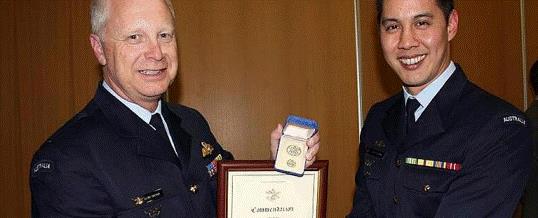
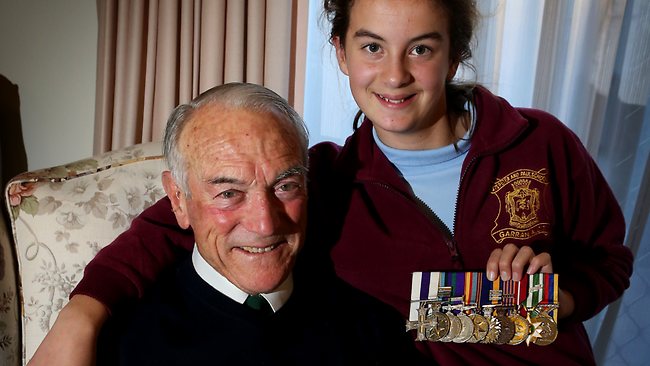
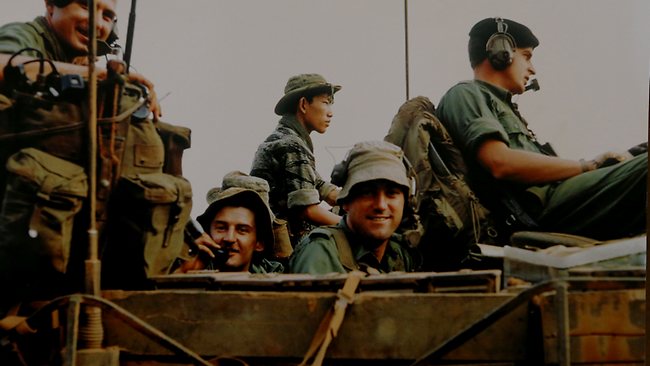

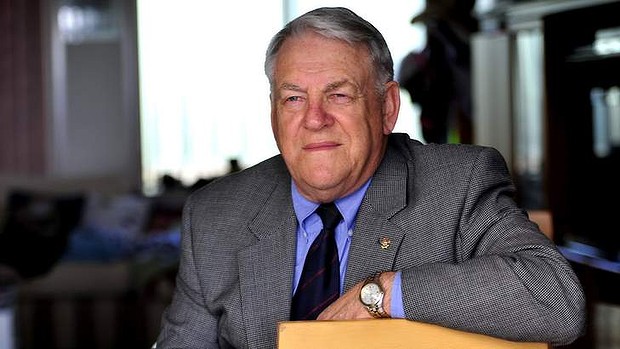 Geoff
believes the federal government's pledge to reform the indexation of
military pensions means he and his comrades have achieved a key
strategic aim in their struggle: bipartisan political support for their
cause. The Canberra-based retired officer served for 30 years in the Air
Force after joining as a 15-year-old apprentice in 1957.
Geoff
believes the federal government's pledge to reform the indexation of
military pensions means he and his comrades have achieved a key
strategic aim in their struggle: bipartisan political support for their
cause. The Canberra-based retired officer served for 30 years in the Air
Force after joining as a 15-year-old apprentice in 1957.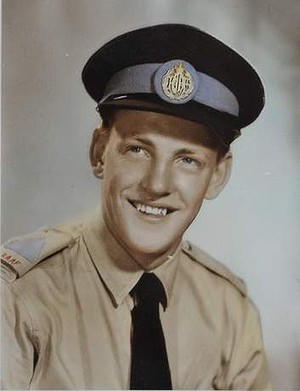
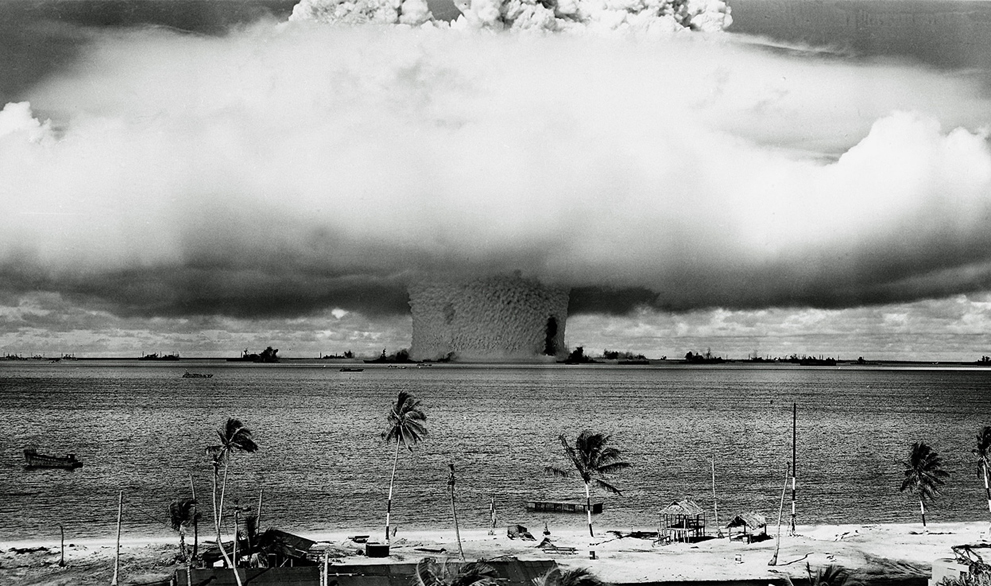
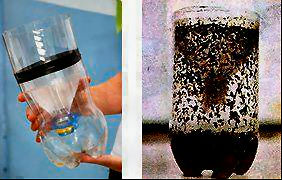

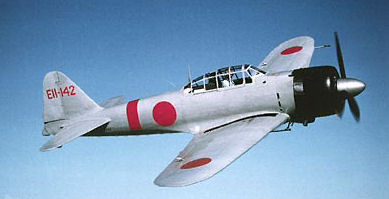
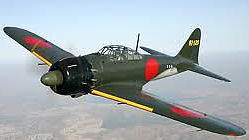
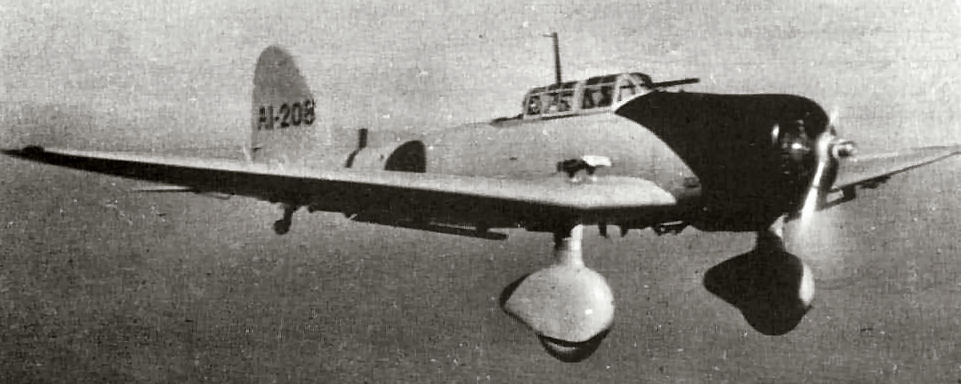 Warhawk P-40's shot down four VaI (Aichi D3A)
dive bombers (left) thirty miles west of Dutch Harbor. In the swirling,
minutes-long dogfight, Lt. John J. Cape shot down a plane identified as
a Zero. Another Zero was almost instantly on his tail. He climbed and
rolled, trying to evade, but those were the wrong manoeuvres to escape a
Zero. The enemy fighter easily stayed with him, firing its two deadly
20-mm cannon and two 7.7-mm machine guns. Cape and his plane plunged
into the sea. Another Zero shot up the P-40 of Lt. Winfield McIntyre,
who survived a crash landing with a dead engine.
Warhawk P-40's shot down four VaI (Aichi D3A)
dive bombers (left) thirty miles west of Dutch Harbor. In the swirling,
minutes-long dogfight, Lt. John J. Cape shot down a plane identified as
a Zero. Another Zero was almost instantly on his tail. He climbed and
rolled, trying to evade, but those were the wrong manoeuvres to escape a
Zero. The enemy fighter easily stayed with him, firing its two deadly
20-mm cannon and two 7.7-mm machine guns. Cape and his plane plunged
into the sea. Another Zero shot up the P-40 of Lt. Winfield McIntyre,
who survived a crash landing with a dead engine.